Railroads in Montana have a rich and storied history, but what exactly is their lasting legacy in the Treasure State?
From the transformative economic impact they had in the late 19th century to the abandoned tracks that now serve as historical markers, Montana’s railroads continue to shape the state’s transportation and economic infrastructure.
In this article, we’ll take a journey through time to explore the rise and fall of Montana’s railroads, from their heyday to their decline in the 20th century.
We’ll also examine the present-day rail systems that still crisscross the state, such as BNSF Railway, Union Pacific, and the Central Montana Rail.
- Related article: Ways to Get Around Montana
Whether you’re a history buff, a rail enthusiast, or a curious traveler, understanding the legacy of Montana’s railroads is a key part of appreciating the state’s past and present.
So, all aboard as we uncover the fascinating story of Montana’s railroads and their enduring impact.
7 Key Takeaways on Railroads in Montana
- Montana’s railways commenced in the late 19th century, revolutionizing the state’s economic landscape.
- Railroads facilitated the swift transportation of people and goods, transforming Montana’s isolated territories.
- Mining towns like Butte and Anaconda thrived, linked by railways that remain vital today.
- The 20th-century decline saw significant abandonments, changing Montana’s railway scenes.
- Present-day railways, notably BNSF, maintain critical roles in moving freight across the state.
- Limited passenger service, like Amtrak’s Empire Builder, is sustained by these railway networks.
- Railway legacies endure, connecting Montana’s history to its ongoing economic vitality.
Montana’s Railway History
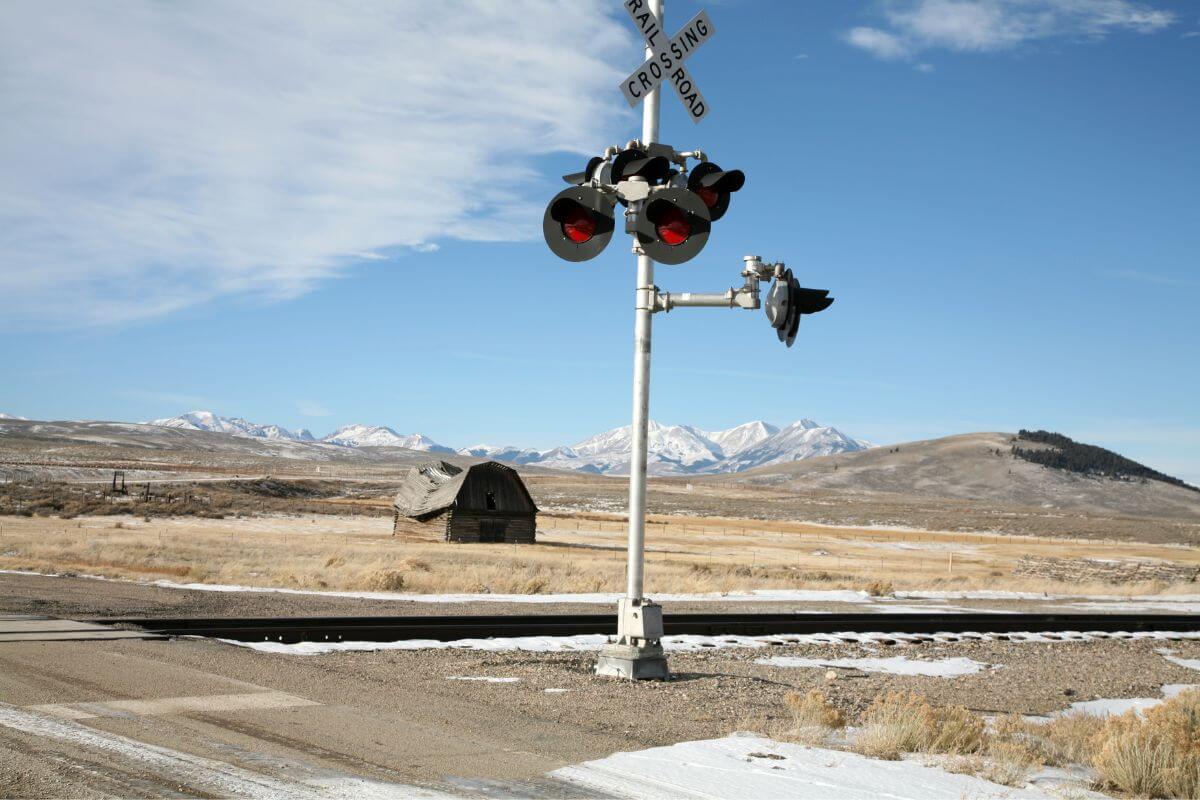
This table contains the key points in Montana railroad history.
| Year | Railroad Historical Event Description |
|---|---|
| 1820s | Railroad construction started in Baltimore, initiating Montana’s link. |
| Late 1870s | Railroads finally reached Montana, introducing rail transport to the state. |
| 1877 | Union Pacific acquires Utah & Northern Railway. |
| May 9, 1880 | Utah & Northern Railway lays first rails over Monida Pass in Montana. |
| December 21, 1881 | The initial train arrives in Butte. |
| July 24, 1887 | Union Pacific widens the railway to standard gauge in a single day. |
| 1908 | Montana Railroad connects Lombard and Lewistown and operates independently. |
| 1909 | Chicago, Milwaukee, St. Paul, and Pacific Railroad complete the West Coast main line. |
Significance of Railroads in Shaping Montana
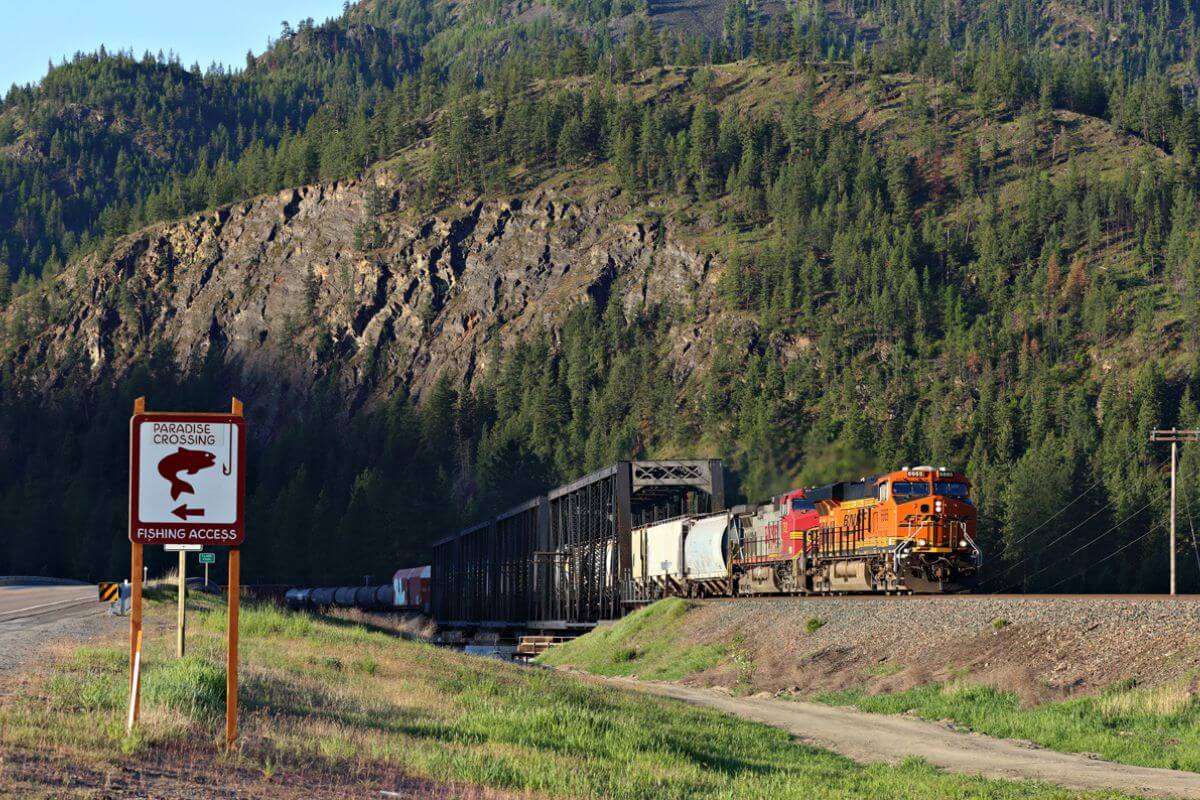
The arrival of railroads in Montana in the late 19th century was the most transformative economic development in the state’s history.
Before their introduction, Montana was a vast and isolated region, reachable only by wagon, horseback, or steamboat.
The presence of railroads in Montana allowed for the quick and reliable transportation of people, equipment, and goods within the state and between Montana and other regions of the country.
This influx of people, supplies, and money, along with the ability to transport goods more quickly, significantly impacted the state’s economy, ultimately leading to the development and prosperity of Montana.
The railroads also played a crucial role in connecting mining towns like Butte and Anaconda, which still benefit from their presence today.
Despite the 20th-century decline of railroads in Montana, their significant effects are still evident in the state’s transportation and economic infrastructure.
The legacy of the railroads continues to shape the state and its economy, reminding us of their enduring impact on Montana’s development.
Montana’s Abandoned Railroads
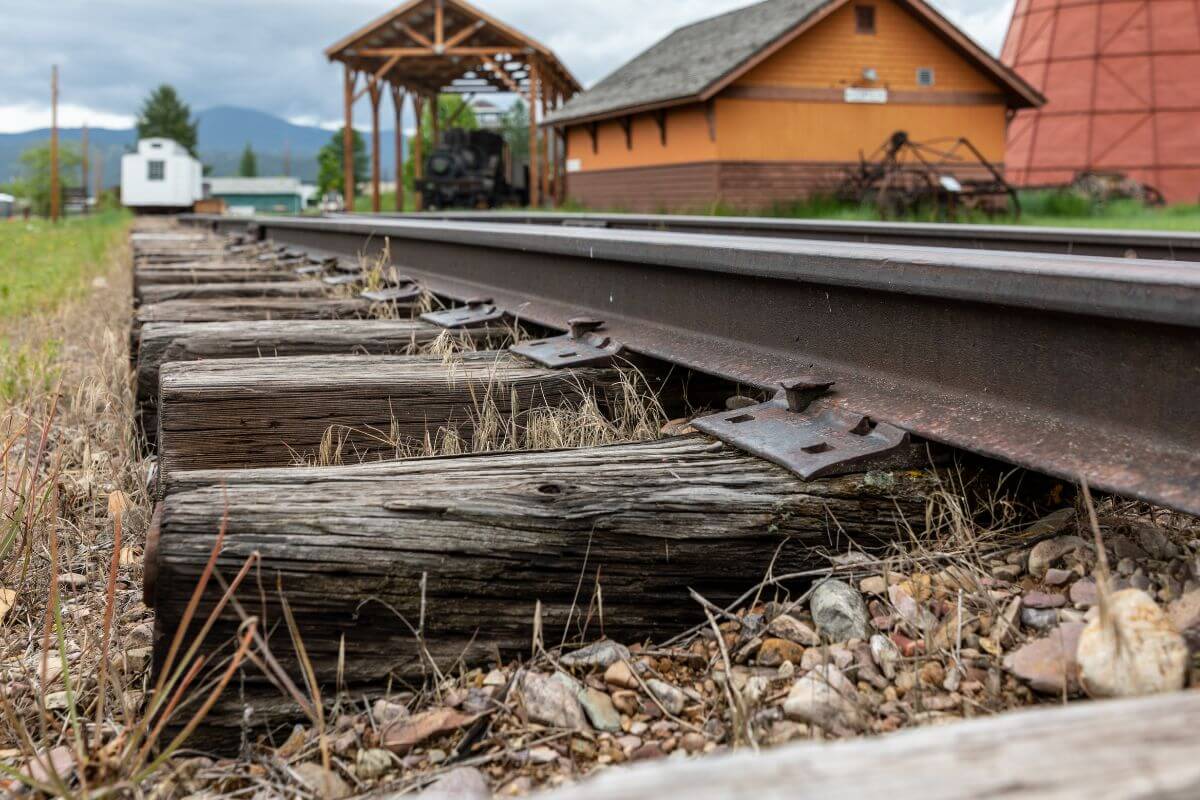
Since the 1920s, Montana has seen the abandonment of approximately 1,300 miles (2,092 km) of railway tracks.
Each stretch of abandoned track tells a story of the state’s changing economic landscape and the evolution of transportation in the American West.
Milwaukee Road Pacific Extension
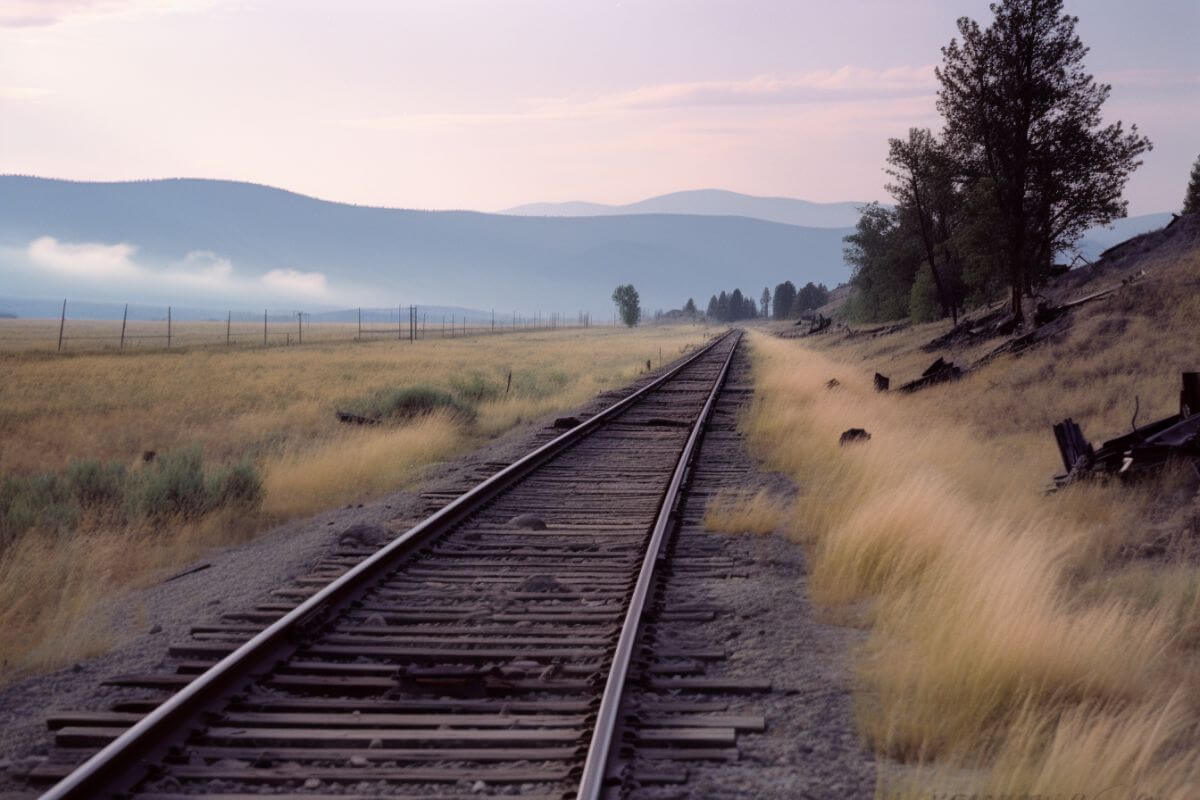
The Milwaukee Road’s Pacific Extension was a transcontinental railroad line stretching over 1,100 miles (1,770 km) from Terry, Montana to Renton, Washington.
However, the road’s financial troubles in the 1970s spelled disaster for the track, as maintenance funds dried up and the line slowly deteriorated.
The railroad faced bankruptcy in 1977, and the final blow struck in 1980, ultimately resulting in the abandonment of the entire railway of the Pacific Extension.
This wasn’t just any abandonment – it was the single largest in American history, marking the end of an era for this iconic railroad line.
The Milwaukee Road’s Pacific Extension may be a relic of the past, but its legacy lives on in the memories of those who once traversed its path.
Northern Pacific Railway
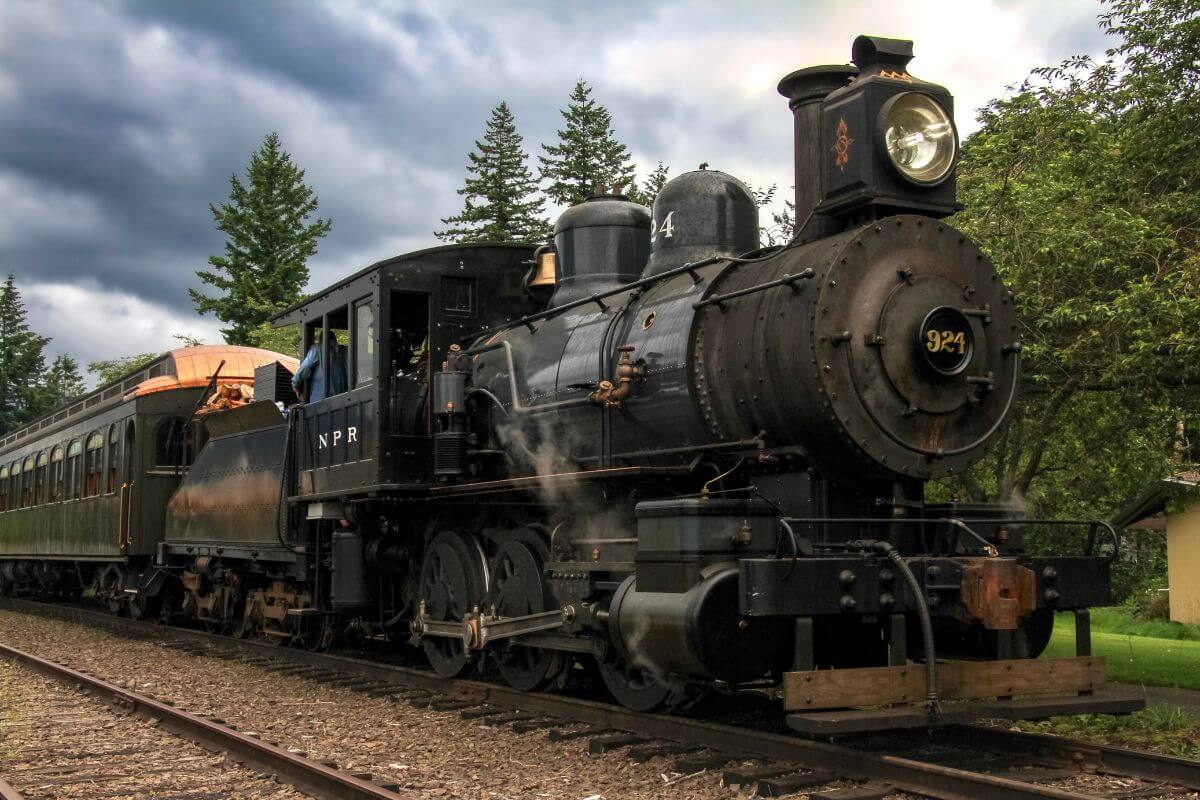
The Homestake Pass route of the Northern Pacific Railway, located north of Butte, Montana, holds historical significance due to its discontinued operation.
Although not officially abandoned, this route has remained inactive for an extended period.
The Homestake Pass line once ran from Logan to Butte, Montana. Though it doesn’t reach Butte anymore, it extends a few miles to a gravel pit near Whitehall, MT, ending at Spire Rock along the pass.
The railway played a pivotal role in fostering the development and expansion of Billings, a noteworthy contribution to the state’s growth.
The end of the Northern Pacific Railway’s Homestake Pass route shows how railroads became less crucial in 20th-century Montana, despite their significant historical role in the state’s growth.
Great Northern Railway
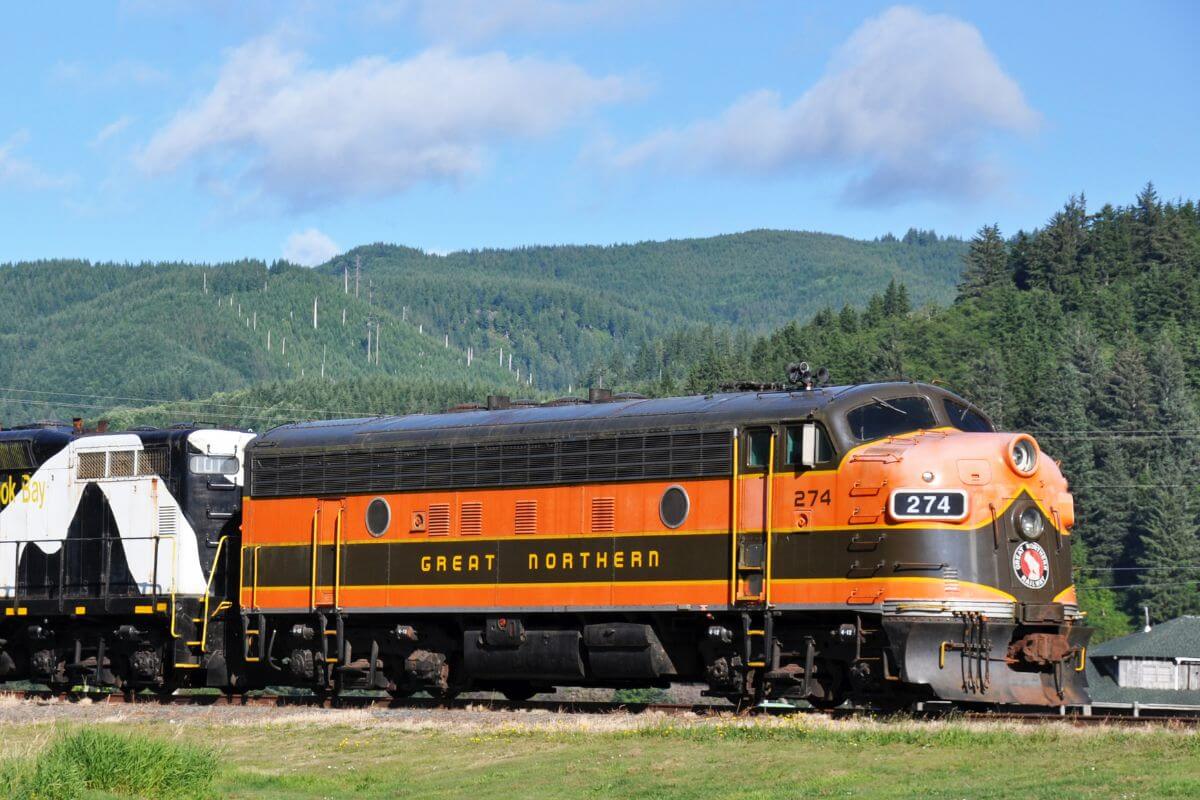
The Great Northern Railway, a transcontinental railroad that ran from 1889 to 1970, held significant influence in Montana, threading through the state and linking major towns and cities.
Today, although the Great Northern Railway no longer operates, its legacy remains cherished and commemorated in Montana.
Rail lines such as the Yellowstone Valley Railroad, initially built by the Great Northern Railway (GN), and the Northern Pacific Railway (NP), persist and function under the management of the BNSF Railway.
Among the abandoned railway lines associated with the Great Northern Railway in Montana is the Great Northern rail spur which is utilized for sheep loading on the Sieben Ranch, positioned just north of Helena, Montana.
Present-Day Railroads in Montana
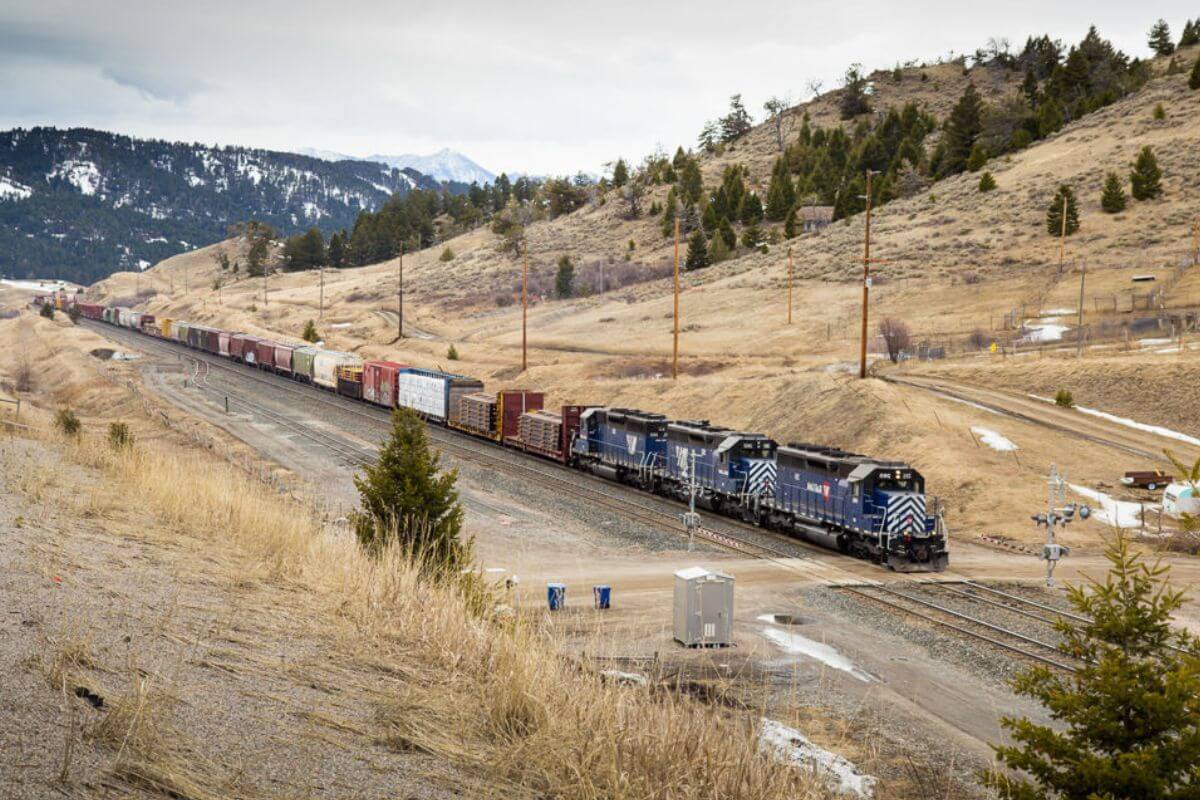
Today, Montana’s railroads continue to play a vital role in the state’s transportation network, connecting key cities and supporting the movement of goods across its diverse landscape.
Despite the evolution of transportation modes, these present-day rail systems maintain their significance in facilitating commerce and trade within Montana and beyond its borders.
1. BNSF

BNSF Railway, the largest freight railroad in the U.S., is deeply rooted in Montana.
They prioritize safety and environmental care. Covering over 2,500 miles (4,023 km) of track, they operate significant facilities like rail yards and shops.
Recently, they’ve taken charge of the operation of the Montana Rail Link (MRL) Subdivision, which is crucial for transporting goods to the West Coast of the country.
With rail yards in Forsyth, Glasgow, Glendive, Great Falls, Havre, Shelby, Whitefish/Columbia Falls, Butte, and Garrison, alongside operational shops in Great Falls and Havre, BNSF ensures smooth operations throughout the state.
Focused on transporting freight, BNSF’s rail networks are vital for sustaining communities in Montana and nationwide.
Regarding public transit in Montana, the state’s lone passenger train, Amtrak’s Empire Builder, follows BNSF lines through the northern region, making 12 stops including:
- Wolf Point
- Glasgow
- Malta
- Havre
- Shelby
- Cut Bank
- Browning
- East Glacier Park
- Essex
- West Glacier
- Whitefish
- Libby
2. Union Pacific
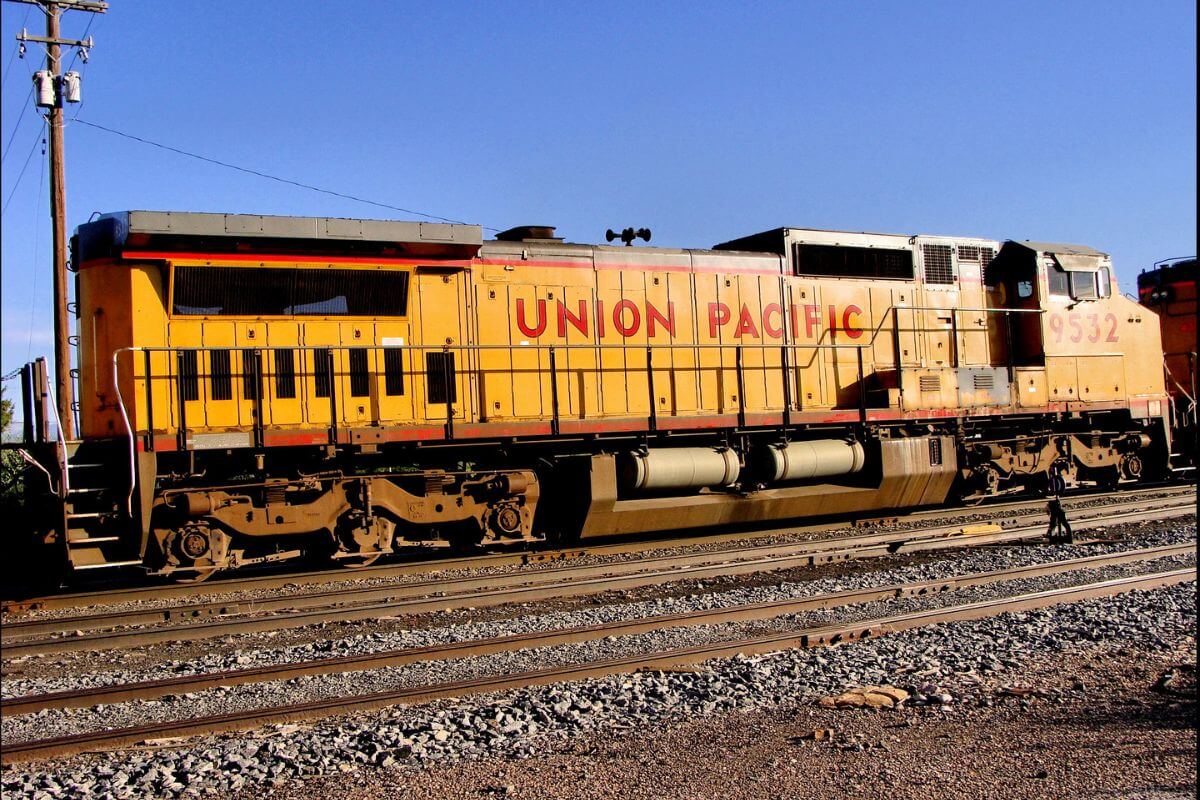
The Union Pacific oversees a significant stretch of approximately 121 miles (194 km) of track in southeastern Montana, extending from Lima to the Port of Montana.
This railway serves as a vital conduit for freight trains transporting a diverse range of commodities, including petroleum products, metallic and non-metallic minerals, wheat, lumber materials, sand, fertilizer, and industrial chemicals.
Beyond its local significance, the Union Pacific Railroad plays a crucial role in Montana’s connectivity, acting as a key link that integrates the state with 22 others.
Most importantly it holds a substantial importance in facilitating the state’s mining operations.
3. Dakota, Missouri Valley & Western
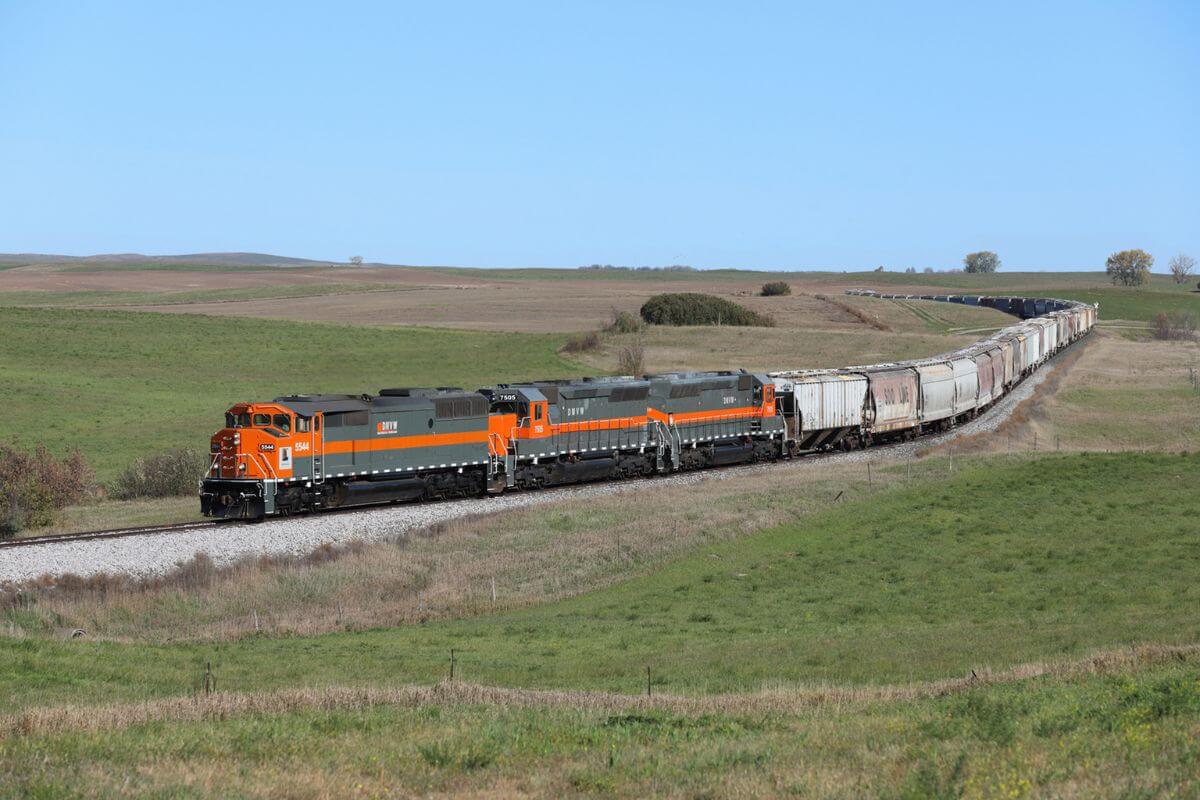
The Dakota, Missouri Valley, and Western Railroad (DMVW) established its presence in Montana back in 1990 through the acquisition of 360 miles (579 km) of the Soo Line track.
Over the years, the railroad’s expanse has significantly broadened, and today, DMVW manages an extensive railway network spanning a total of 502 miles (807 km) across the regions of Montana, North Dakota, and South Dakota.
A significant portion of this expansive track, precisely 412 miles (663 km), operates under lease from the Canadian Pacific Railway.
To ensure smooth operations and effective management of this vast network, DMVW maintains a robust fleet comprising 24 locomotives.
This railway plays a pivotal role in supporting the company’s activities and maintaining efficient rail services throughout the tri-state area.
The evolution and growth of DMVW’s presence in Montana reflect its ongoing commitment to enhancing transportation infrastructure and connectivity in the region.
4. Butte, Anaconda & Pacific Railway
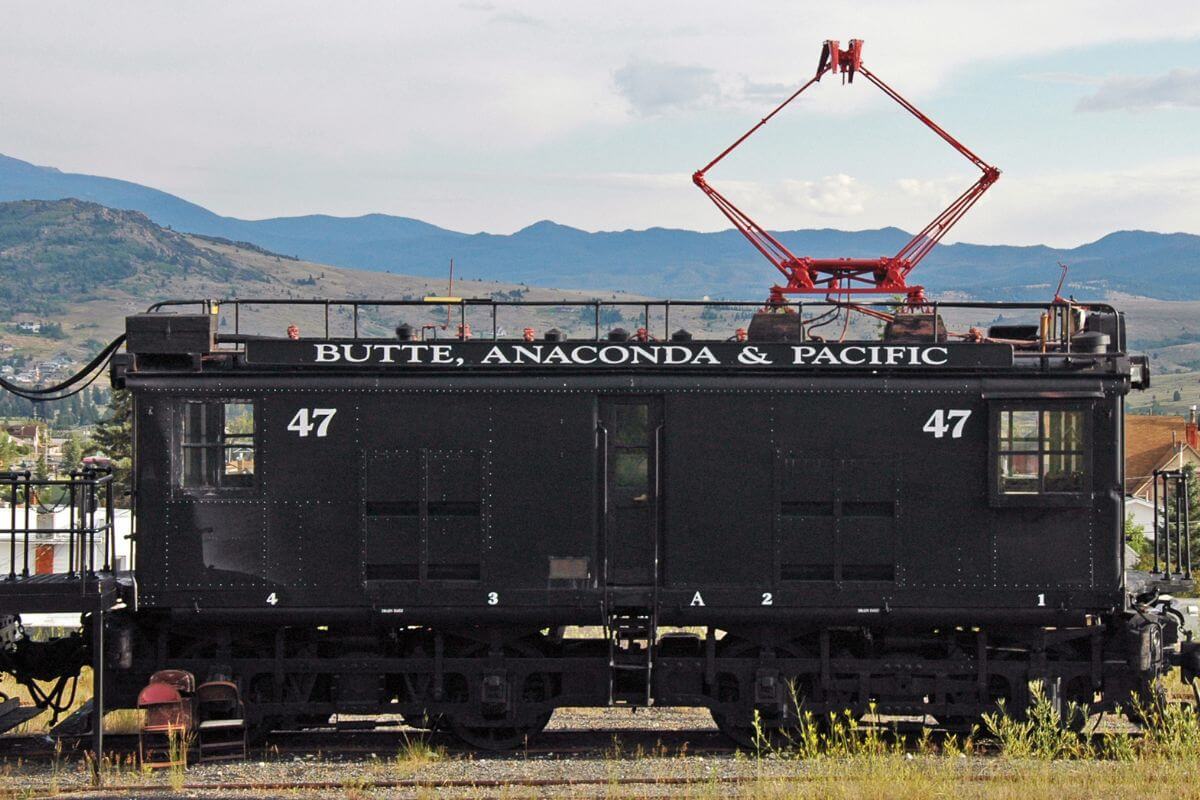
The railway connection between the historic mining hubs of Butte and Anaconda stands as a testament to Montana’s enduring railway legacy.
Today, the Butte, Anaconda, & Pacific Railway oversees and maintains a 63-mile track, ensuring a vital link between the communities of Butte and Anaconda.
This railway system interfaces with major Class I carriers like BNSF at Butte and Silver Bow, while also connecting with Union Pacific at Silver Bow.
The railway’s freight operations encompass a diverse range of goods, including acids, copper, electrical transformers, equipment, impacted soil, industrial products, and petroleum.
This freight movement sustains the economic activities and logistical operations between these mining communities, upholding their historical significance in Montana’s industrial landscape.
5. Central Montana Rail
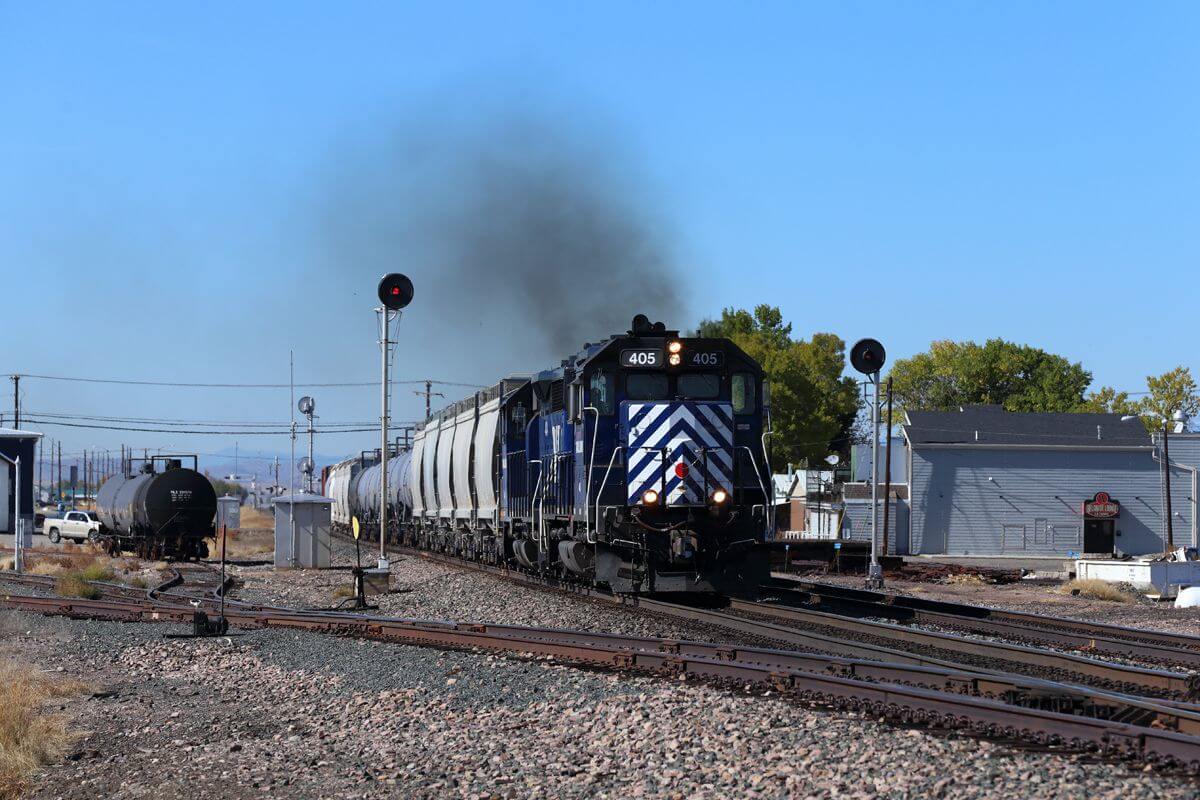
The Central Montana Rail operates within Judith Basin, Fergus, and Chouteau Counties, having been acquired by a nonprofit organization back in 1985.
Its current tracks hold historical significance, being part of the Northern Montana line that originally led to Great Falls and was initially constructed by the Chicago, Milwaukee, St. Paul, and Pacific Railroad.
The primary railway line connects the towns of Geraldine and Moccasin, establishing a vital link with the BNSF Railway, and facilitating transportation and trade in the region.
Central Montana Rail predominantly operates as a freight railroad but also features the seasonal Charlie Russell Chew Choo dinner train, honoring Montana’s iconic cowboy artist, Charlie Russell.
This dinner train offers passengers a scenic and nostalgic journey, adding a touch of history and culture to the rail experience in the area.
Railroads in Montana Final Thoughts
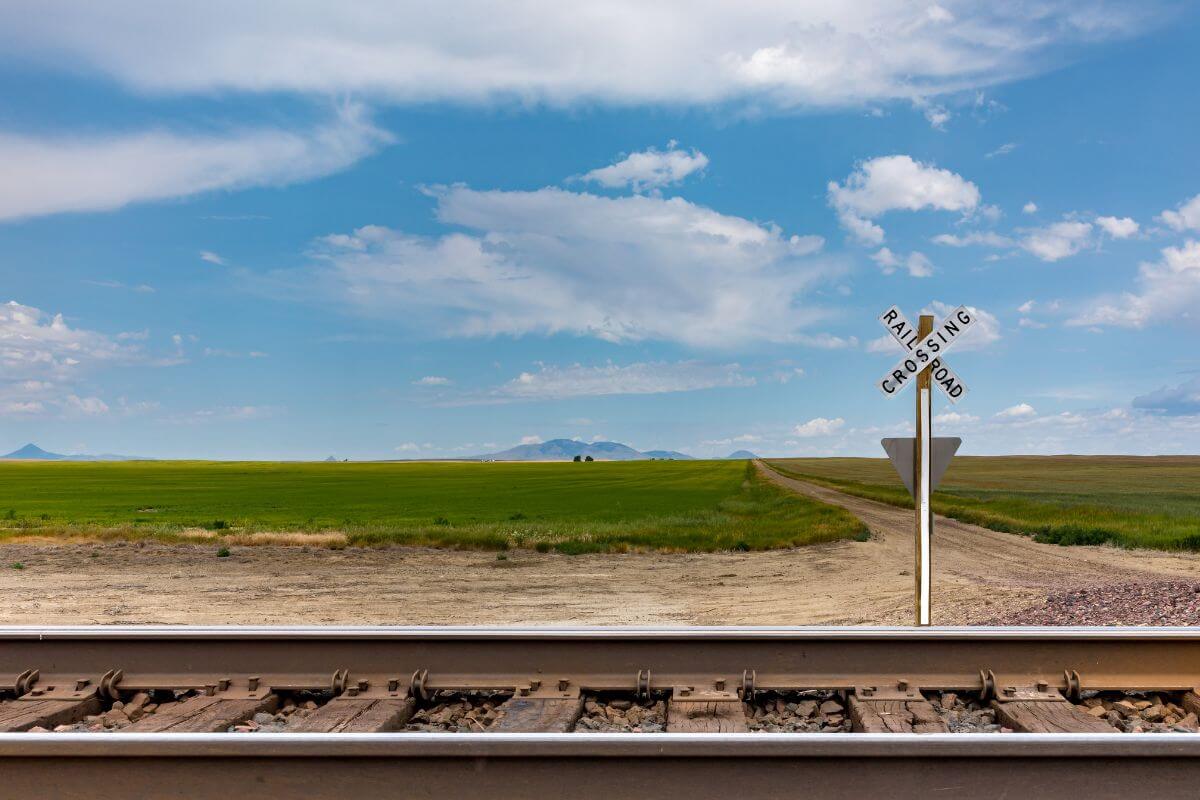
Reflecting on the history and impact of railroads in Montana, it’s clear that these iron arteries played a pivotal role in shaping the state’s development.
From their late 19th-century inception to their transformative impact on the economy and transportation, Montana’s railroads have left an indelible mark on the state’s landscape.
Railroad abandonment, notably the Milwaukee Road’s Pacific Extension and the Northern Pacific Railway’s Homestake Pass route since the 1920s, significantly altered Montana’s railway landscape.
Today, Montana’s railroads continue to play a vital role in the transportation of goods and commodities, with a majority of it being BNSF Railway’s extensive network.
It’s also worth remembering that Amtrak’s Empire Builder train remains the only passenger train operating in Montana, navigating through BNSF’s railways.
The historical and modern significance of Montana’s railways is undeniable, shaping the state’s past, present, and future.
Railroads in Montana FAQs
1. What Train Goes Through Montana?
The Empire Builder is the Amtrak train that goes through Montana. It is an overnight cross-country train that runs between Chicago and Seattle/Portland, with several stations in Montana.
2. What Railroad Is in Yellowstone?
The Yellowstone Valley Railroad (YSVR) is a short-line railroad that operates in North Dakota and Montana, specializing in crude oil haulage.
The YSVR does not operate the Empire Builder train, which is an Amtrak train that goes through Montana
3. Is the Montana Rail Link Still Operating?
Montana Rail Link (MRL) was a Class II railroad that operated in the United States from 1987 until January 2022, when it terminated its lease with BNSF Railway and was reacquired by its successor.
BNSF Railway aims to take over Montana Rail Link operations on Jan. 1, 2024.
Fascinated by this topic? Dive deeper into Montana with these recommended articles:
- https://www.mdt.mt.gov/rail/
- https://www.mdt.mt.gov/publications/plans/railroad-info.shtml
- https://leg.mt.gov/content/Committees/Interim/2019-2020/Transportation/Committee-Topics/HJR34/Montana-Rail-Map.pdf
- https://mslservices.mt.gov/geographic_information/data/datalist/datalist_Details.aspx?did=%7B2142F609-D6C4-4521-A653-F99163F9F248%7D
- https://www.flickr.com/photos/huddleston/20242463025
- https://commons.wikimedia.org/wiki/File:Missoula_28MT,USA29,_Fort_Missoula
- https://commons.wikimedia.org/wiki/File:Northern_Pacific_924.jpg
- https://commons.wikimedia.org/wiki/File:Great_Northern_Railway
- https://www.flickr.com/photos/69258414@N08/46862875994
- https://www.flickr.com/photos/mvolek/42565119834
- https://www.flickr.com/photos/spendadaytouring/3926793097
- https://www.flickr.com/photos/huddleston/51623764448
- https://www.flickr.com/photos/jsjgeology/22603405968
- https://www.flickr.com/photos/huddleston/23867746528

